If You Take Paracetamol More Than Twice a Week, Your Liver Needs This (What Your Chemist Won't Tell You)
Paracetamol is the UK's most trusted painkiller—but nobody mentions what happens to your liver after 4-6 months of taking it multiple times weekly. Continue reading to discover what liver specialists recommend.

Margaret is 53 and has arthritis in both knees. She takes paracetamol every morning and evening—just 1,000mg twice daily, well within the "safe" limit on the packet.
She's been doing this for 4 years.
Last month, her routine blood test came back with elevated liver enzymes. Her GP said, "Probably from the paracetamol. Try to take less."
But Margaret needs paracetamol. Without it, she can barely walk to the shops. How is she supposed to "take less"?
What her GP didn't have time to explain during a rushed 10-minute appointment is this: Paracetamol is the number one cause of acute liver failure in the UK—and it's not from overdoses or people taking too many pills at once.
It's from regular, "safe" doses taken over months and years.
If you're like Margaret—if you reach for paracetamol several times a week for your knees, your back, your headaches, or just the general aches that come with getting older—this article is for you.
Because there's something happening inside your liver every single time you take that tablet. And nobody's talking about it.

The Paracetamol Paradox: Safe… Until It Isn't
Paracetamol is remarkable. It's been keeping Britain comfortable since the 1950s. It doesn't upset your stomach like ibuprofen can. It doesn't thin your blood like aspirin. It's considered so safe that you can buy 32 tablets in any supermarket for less than a pound.
Over 200 million packets are sold in the UK every year.
But here's what most people don't realize: Your liver doesn't see paracetamol as harmless. Every single dose you take puts your liver to work in a very specific—and potentially dangerous—way.
When you swallow paracetamol, about 90% of it goes straight to your liver to be broken down and eliminated. This is normal. This is what your liver does.
But during this breakdown process, a toxic byproduct is created. It's called NAPQI, and it's genuinely harmful to your liver cells.
Under normal circumstances, your liver handles this just fine. It has a built-in defense system—a master antioxidant called glutathione that neutralizes NAPQI before it can do any damage.
Think of glutathione as your liver's security team. Every time paracetamol creates toxic waste, glutathione swoops in and escorts it safely out of your system.
This works brilliantly… when you take paracetamol occasionally.
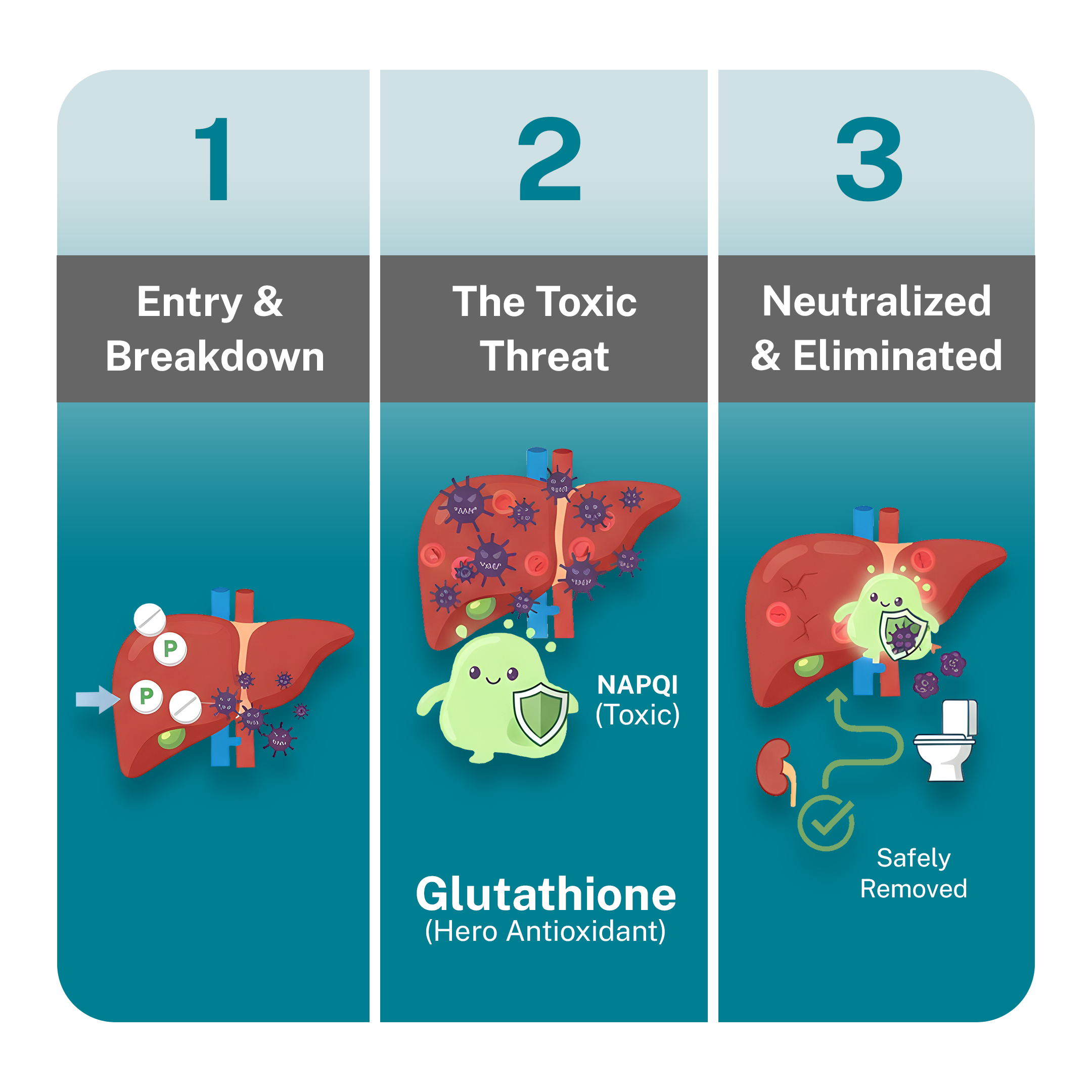
The Problem Nobody Warns You About
Here's where things get concerning for regular users.
Your liver only has so much glutathione available at any given time. And when you take paracetamol day after day, week after week, month after month, you're constantly draining your glutathione reserves.
It's like withdrawing money from a bank account faster than you can deposit it.
Eventually, your glutathione levels drop too low. When that happens, the toxic NAPQI has nothing to stop it. It starts damaging your liver cells directly.
This is why people like Margaret—who never take more than the recommended dose—can still end up with liver problems.
The packet says: "Do not take more than 8 tablets (4,000mg) in 24 hours."
But nowhere does it say: "If you take this every day for months, your liver's natural defenses will gradually become overwhelmed."
Dr. William Lee, a liver specialist who's studied paracetamol toxicity for over 20 years, put it this way: "We're seeing more and more cases of liver injury in people who never exceeded the daily limit. They're simply taking the maximum dose day after day, and their livers can't keep up."
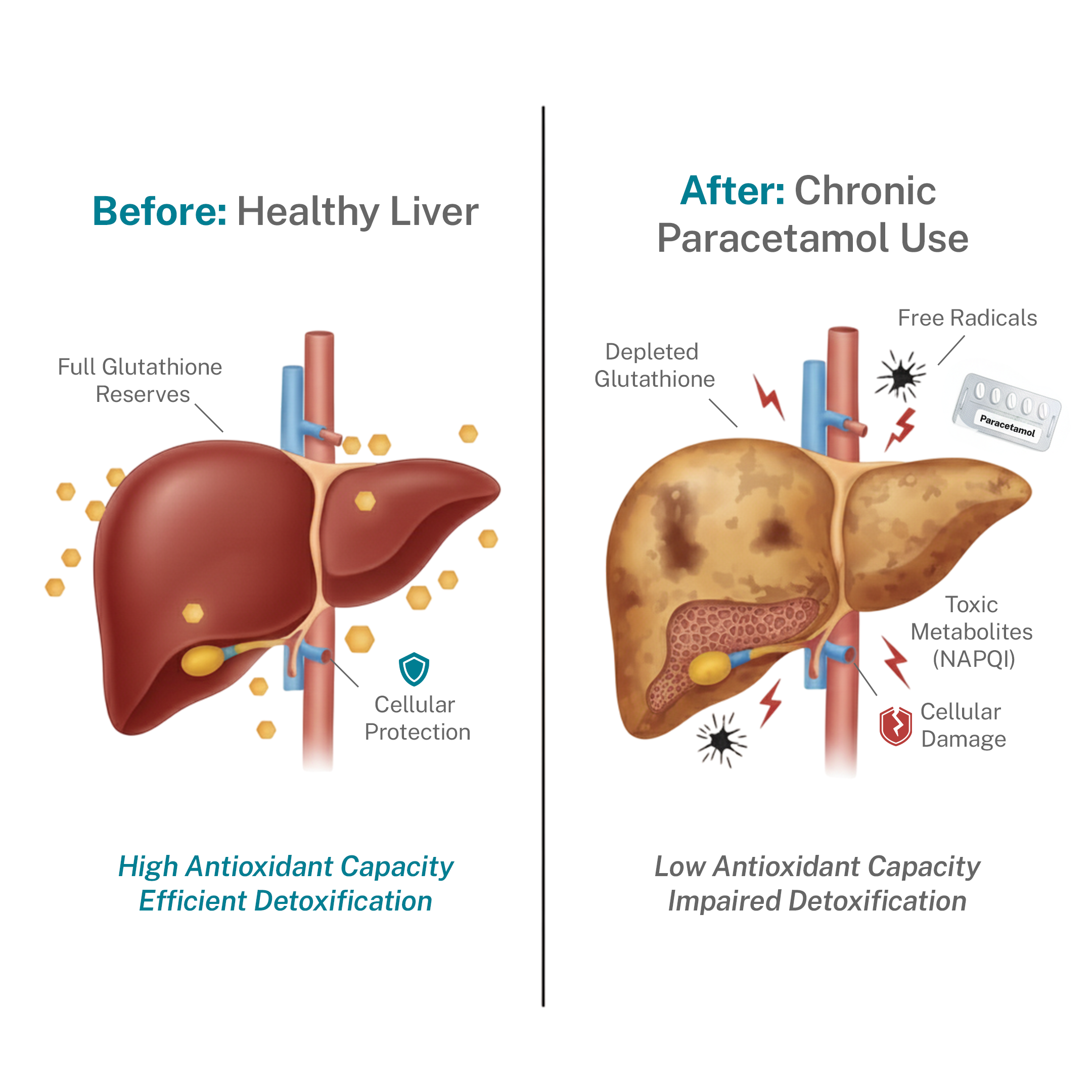
The "Safe Dose" Myth
The 4,000mg daily limit isn't wrong, exactly. For most healthy adults taking paracetamol for a few days—for a cold, or after a dental procedure—4,000mg is genuinely safe.
But that guideline was never designed for chronic use.
It certainly wasn't designed for people over 50, whose livers naturally produce less glutathione than younger people.
It wasn't designed for people with any existing liver concerns, even mild ones.
And it definitely wasn't designed for the reality of how most people actually use paracetamol—as a daily maintenance medication for ongoing pain.
Consider this: A study published in the British Journal of Clinical Pharmacology found that people taking just 3,000mg of paracetamol daily (six standard 500mg tablets) for one week showed measurable glutathione depletion and early signs of liver stress.
Three thousand milligrams. That's less than the maximum dose. Taken for just seven days.
Now imagine taking that same amount for months. For years. Like Margaret. Like millions of people across the UK who rely on paracetamol to manage arthritis, back pain, or chronic headaches.
The truth is, for regular users, the "safe" dose isn't as safe as we've been led to believe.
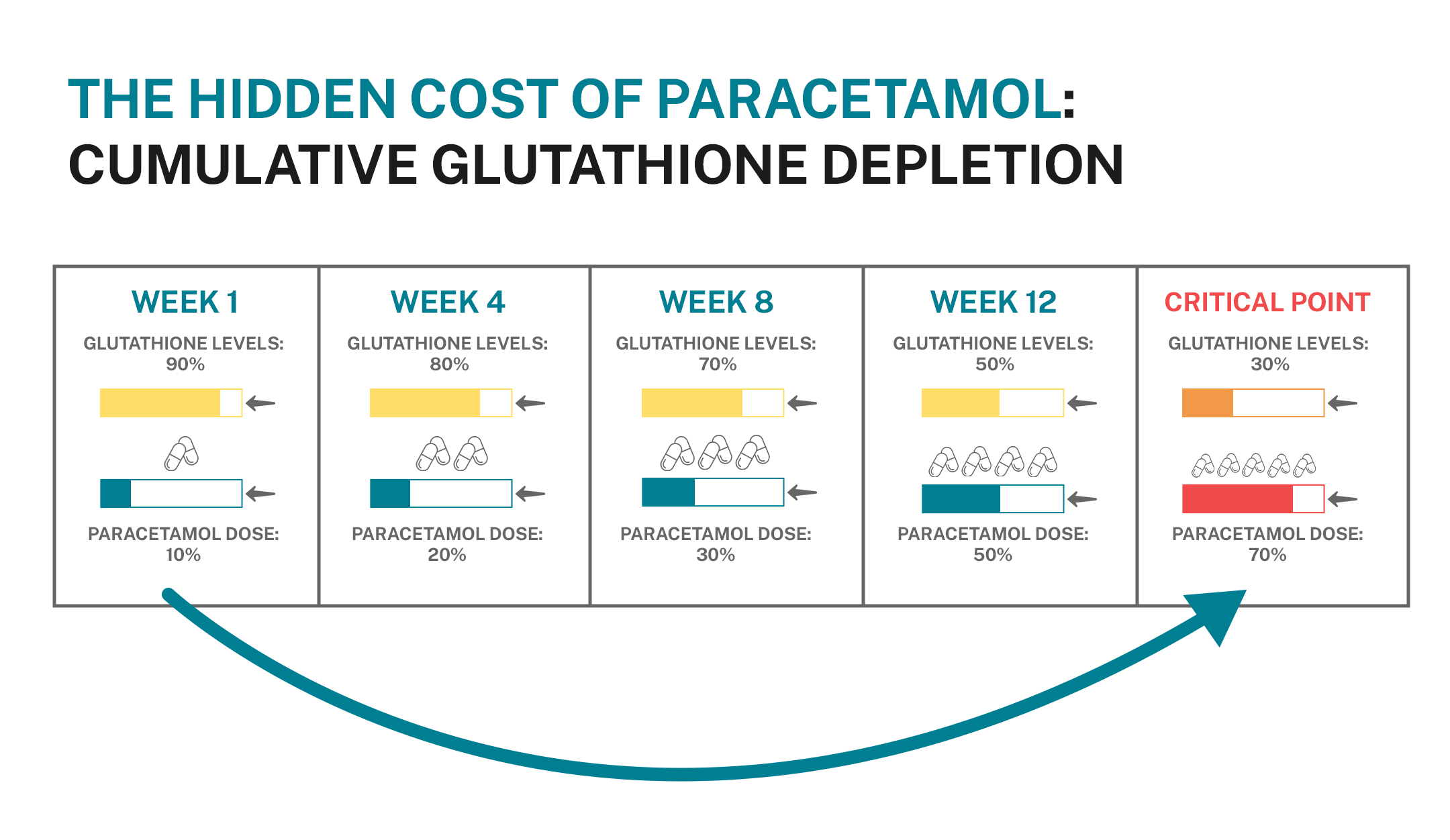
How to Know If Your Liver Is Struggling
Your liver is remarkably resilient. It doesn't complain early. By the time most people have symptoms of liver problems, significant damage has already occurred.
But there are early warning signs that your liver is under strain from regular paracetamol use:
Persistent fatigue that doesn't improve with rest. Your liver is responsible for processing and storing energy. When it's overworked, you feel it.
Unexplained nausea or loss of appetite, particularly in the morning. This can be an early sign that your liver is struggling with its detoxification workload.
Tenderness or discomfort in your upper right abdomen, just below your ribs. That's where your liver sits, and inflammation can cause a dull ache.
Dark urine even when you're well-hydrated. When your liver can't process waste products properly, they show up in your urine.
Elevated liver enzymes on routine blood tests. Your GP might mention AST or ALT levels being "a bit high." This is your liver's distress signal.
None of these symptoms mean you're in immediate danger. But they're your body's way of telling you that something needs to change.
Margaret ignored the fatigue for months. She assumed it was just part of getting older. It wasn't until the blood test that she realized her liver had been struggling all along.
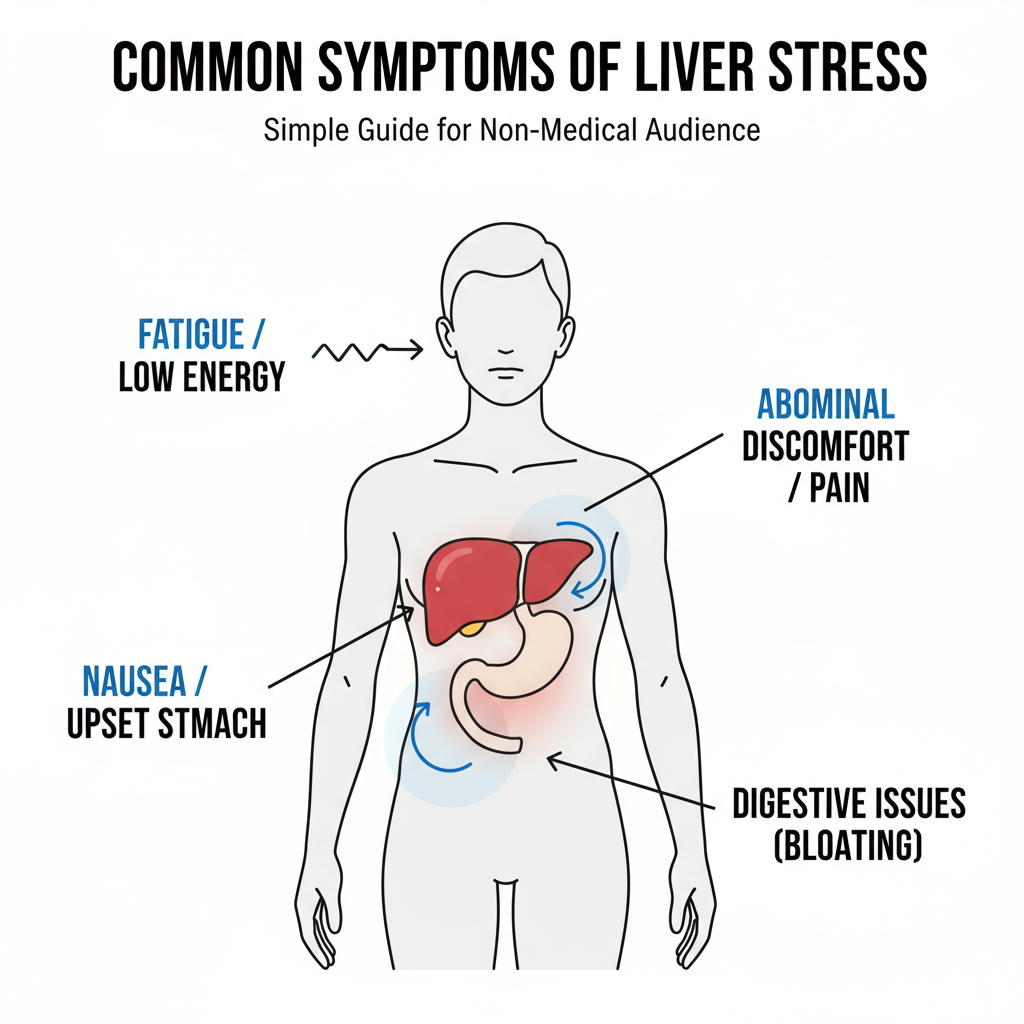
What the NHS Guidelines Don't Tell You
When you look up paracetamol on the NHS website, you'll find dosing guidelines, side effects, and warnings about liver damage from overdose.
What you won't find is any advice on nutritional support for your liver if you're a regular user.
This isn't because nutritional support doesn't matter. It's because conventional medicine focuses on treating problems after they occur, not on prevention.
But the research is crystal clear: Your liver's ability to handle paracetamol safely depends entirely on having adequate nutritional reserves, particularly glutathione and the nutrients needed to produce it.
Think back to that security team analogy. If paracetamol is constantly creating toxic waste, and glutathione is the team that cleans it up, then you need to make sure your security team is well-resourced and well-staffed.
Your liver makes glutathione from three amino acids: cysteine, glutamic acid, and glycine. But this production process also requires specific vitamins and minerals to work properly—particularly selenium, zinc, and B vitamins.
When you're taking paracetamol regularly, you're draining glutathione faster than normal. Which means you need more of these building blocks available, not the standard amount.
This is the gap that nobody talks about.
The Research-Backed Protection Strategy
So what's the answer? Stop taking paracetamol and just live with the pain?
No. If you need paracetamol for quality of life, you need it. But you can take it more safely by giving your liver the support it needs to handle chronic use.
The scientific evidence points to several key nutrients that work together to protect your liver:
Milk Thistle (Silybum marianum)
Milk thistle has been used for liver support for over 2,000 years, and modern research has validated why it works.
The active compound, silymarin, does two important things: It acts as a powerful antioxidant that directly protects liver cells from damage, and it supports the regeneration of new, healthy liver tissue.
Clinical trials have shown that silymarin can reduce markers of liver inflammation in people taking hepatotoxic medications—that's medical speak for drugs that stress the liver, which includes paracetamol.
Studies consistently use doses of 200-300mg of milk thistle extract to achieve these protective benefits.
Choline
This is one of the most important nutrients for liver function, yet most people have never heard of it.
Choline is officially recognized by European health authorities as contributing to the maintenance of normal liver function. It's not optional—your liver genuinely needs it to process fats and remove waste products properly.
When you're taking paracetamol regularly, adequate choline becomes even more critical. It helps your liver handle the increased workload without accumulating damage.
Research shows that 30mg of choline daily supports healthy liver function, though many liver support formulas provide more.
Artichoke Leaf
Artichoke might seem like an unusual choice, but it has remarkable liver-protective properties.
Artichoke leaf extract contains compounds called caffeoylquinic acids that stimulate bile production. Bile is your liver's primary method of eliminating toxins—including the breakdown products of paracetamol.
By supporting healthy bile flow, artichoke helps your liver clear out toxic substances more efficiently, reducing the burden on your liver cells.
Studies show that 100mg of artichoke leaf extract can contribute to healthy liver function and may help maintain a healthy weight as part of a balanced lifestyle.
Dandelion Root
Dandelion isn't just a garden weed—it's been used in traditional medicine for liver support for centuries.
Modern research confirms that dandelion root contributes to the body's natural detoxification processes and helps maintain healthy liver function.
A 5:1 extract means the dandelion is concentrated five times, so 100mg of extract represents 500mg of the original herb—giving you therapeutic levels in a small dose.
Apple Cider Vinegar Extract
While apple cider vinegar is better known for digestive support, it also plays a role in liver health.
The acetic acid in apple cider vinegar can contribute to maintaining healthy blood sugar levels after meals—important because blood sugar spikes create extra work for your liver.
It also supports healthy digestion, which reduces the toxic load entering your liver from the gut. When you're taking paracetamol regularly, every bit of reduced workload helps.
Yarrow
Yarrow is a traditional herb that supports liver health by promoting bile production, which aids digestion and detoxification.
Healthy bile flow is essential when you're taking paracetamol regularly because bile is how your liver eliminates the toxic byproducts. Yarrow helps keep this elimination system working efficiently.
Chanca Piedra
This South American herb has gained attention for its liver-protective properties. Research suggests it can contribute to healthy liver function and support the body's natural detoxification processes.
Chanca piedra also supports kidney health, which is important because your kidneys work alongside your liver to eliminate waste products from medications.
Beetroot
Beetroot isn't just good for athletic performance—it's excellent for liver health too.
Beetroot contains betaine and other compounds that can contribute to healthy liver function. It also supports a healthy cardiovascular system, ensuring good blood flow to and from the liver.
When your liver is processing paracetamol, it needs optimal blood flow to deliver nutrients and remove waste products.
Chicory Root
Chicory root contains inulin and other beneficial compounds that support healthy digestion and may help maintain healthy cholesterol levels.
It also contributes to liver health by supporting the gut-liver axis—the connection between your digestive system and your liver that's crucial for overall health.
Zinc
Zinc is an essential mineral for liver function. It's involved in over 300 enzyme reactions in your body, many of which occur in the liver.
Zinc supports your immune system, helps with tissue repair, and plays a role in the antioxidant systems that protect your liver from damage.
When you're taking paracetamol regularly, adequate zinc intake helps your liver maintain its protective mechanisms.
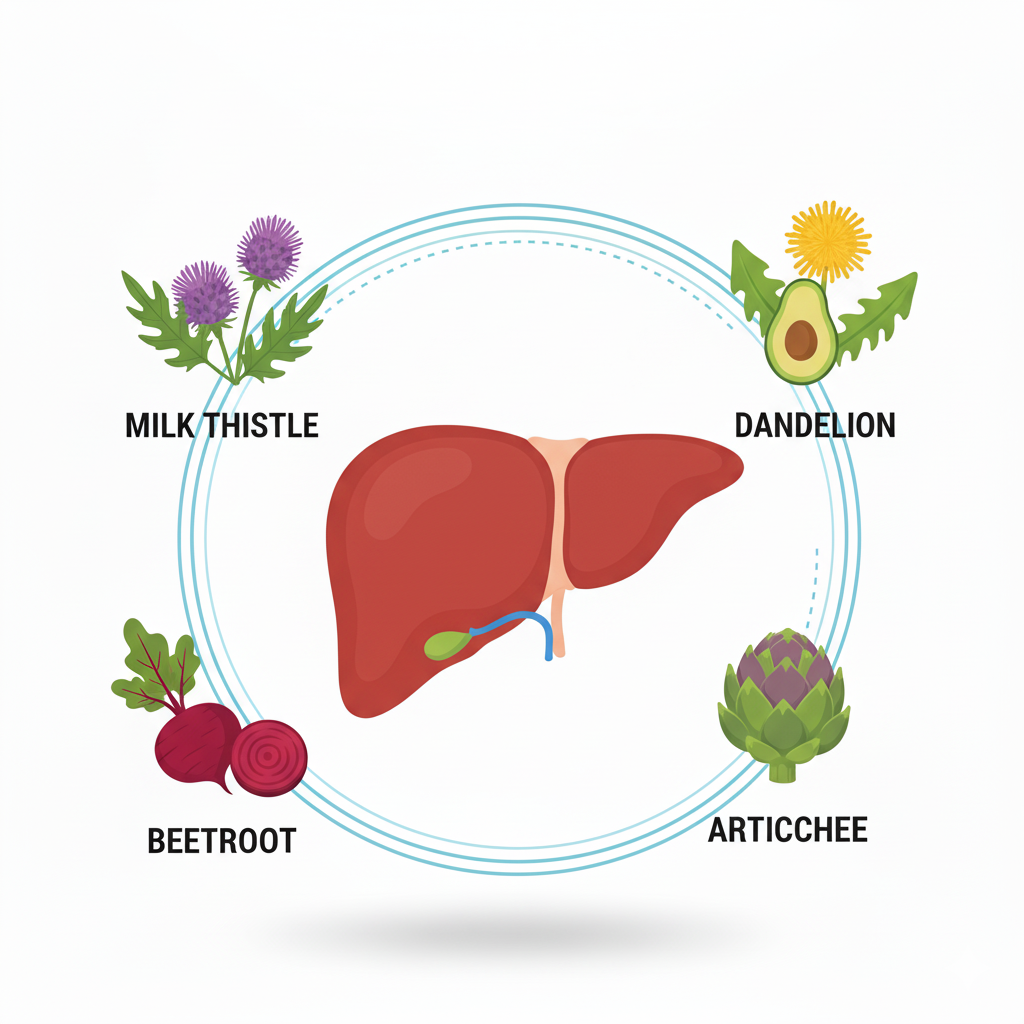
Why This Matters More As You Get Older
If you're over 50, everything we've discussed becomes even more important.
Your liver doesn't age the way your skin does—you can't see the changes—but age does affect how efficiently your liver works.
Glutathione production naturally declines with age. By 50, most people have about 20-25% less glutathione than they did at 30.
At the same time, adults in their 50s and beyond are more likely to be taking paracetamol regularly for chronic conditions like arthritis, back pain, or recurring headaches.
It's a perfect storm: Less natural protection, more exposure to the thing that requires protection.
This is why we're seeing increasing numbers of people over 50 with elevated liver enzymes and early signs of liver dysfunction—not from any one dramatic event, but from years of steady, cumulative strain.
Margaret's story is common. She did nothing wrong. She followed the packet instructions perfectly. But nobody told her that in her 50s, taking maximum doses daily was slowly depleting her liver's defenses.
The good news? Once you understand what's happening, you can do something about it.

The Complete Protection Approach
If you're a regular paracetamol user, here's what the research suggests you should be doing:
Continue taking paracetamol as needed for pain relief. Don't suffer unnecessarily. But take the lowest effective dose, not automatically the maximum.
Support your liver with a comprehensive blend that includes milk thistle (300mg), artichoke leaf (100mg), dandelion root extract (100mg), choline (30mg), and zinc (10mg). These work together to protect liver cells and support natural detoxification.
Add complementary nutrients like apple cider vinegar extract (200mg), yarrow (100mg), chicory root (100mg), chanca piedra (50mg), and beetroot (50mg). These support bile production, healthy digestion, and overall liver function.
Ensure all these nutrients work together. Liver protection isn't about one magic ingredient—it's about a comprehensive approach that addresses multiple aspects of liver health simultaneously.
These aren't alternatives to paracetamol. They're nutritional support that allows your liver to handle paracetamol the way it's supposed to—safely and efficiently, even with regular use.
Think of it this way: If you were running a marathon every day, you wouldn't just keep running without proper nutrition and recovery. You'd fuel your body appropriately for the increased demand.
Taking paracetamol regularly is asking your liver to run a marathon every day. This is how you fuel it properly.
Real Results From Real People
After Margaret's elevated liver enzymes, her GP suggested reducing her paracetamol dose. But Margaret tried that, and the pain in her knees became unbearable.

Instead, she started taking a comprehensive liver support formula containing milk thistle, choline, artichoke, dandelion, and the full spectrum of supportive nutrients, while continuing her regular paracetamol dose for pain management.
Three months later, her follow-up blood test showed her liver enzymes had returned to normal range.
"I wish someone had told me about this years ago," she said. "I wouldn't have spent months worrying that I was destroying my liver just trying to manage my arthritis."
John, 58, had been taking paracetamol for chronic back pain for six years. He started noticing persistent fatigue and occasional nausea—symptoms he'd dismissed as just getting older.

After learning about glutathione depletion and liver support, he added a comprehensive liver blend to his daily routine. Within six weeks, the fatigue had lifted significantly, and the nausea disappeared completely.
"I didn't realize how much the paracetamol was affecting me until I gave my liver proper support," he explained. "Now I can keep taking what I need for my back without feeling dreadful all the time."
These aren't miracle stories. They're simply what happens when you give your body the nutritional tools it needs to handle the job you're asking it to do.
What You Should Do Next
If you take paracetamol more than twice a week—for arthritis, chronic pain, frequent headaches, or any ongoing condition—your liver needs nutritional support.
This isn't optional. It's not about being extra cautious or overly worried about your health. It's about understanding how paracetamol actually works in your body and responding appropriately.
The evidence is clear: Regular paracetamol use depletes glutathione. Glutathione depletion leads to liver stress. Liver stress, over time, leads to damage.
But with the right nutritional support—a comprehensive blend of milk thistle, choline, artichoke, dandelion, apple cider vinegar, yarrow, chanca piedra, beetroot, chicory root, and zinc—you can maintain healthy liver function and protect your liver while continuing to manage your pain effectively.
You don't have to choose between pain relief and liver health. You can have both.
The question is: Are you going to wait until your next blood test shows elevated liver enzymes, like Margaret? Or are you going to act now, while you have the chance to protect your liver before problems develop?
If you're serious about protecting your liver while taking paracetamol regularly, there's a comprehensive liver support formula specifically designed for people in your situation. It contains therapeutic doses of milk thistle, choline, artichoke leaf, dandelion root, apple cider vinegar extract, yarrow, chanca piedra, beetroot, chicory root, and zinc—the full spectrum of nutrients your liver needs—all in one convenient daily serving.
Your liver works hard for you every single day. If you're asking it to process paracetamol regularly, the least you can do is give it the support it needs to do that job safely.
Because you deserve to manage your pain effectively without worrying about what it's doing to your liver.
And with the right approach, you can.
Medical Disclaimer: This article is for educational purposes only and is not intended to replace professional medical advice. Never stop or change prescribed medication without consulting your doctor. If you're concerned about your liver health or medication effects, please consult your GP or healthcare provider.